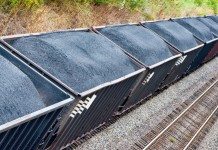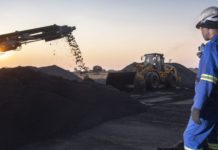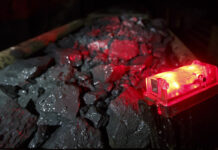
[miningmx.com] — TRANSNET Freight Rail (TFR) had improved its performance on the Maputo rail link significantly, but the high rail tariff charged had to be reduced to make further expansion of coal exports on the route viable.
That’s the view of Coal of Africa (CoAL) CEO John Wallington who said railings to Maputo had increased from around 150,000t in the quarter to end-June 2010, to nearly 400,000t in the three months to end-June 2011.
He added TFR had maintained the improving trend since CoAL’s year-end of June 30 and, for the current September quarter, was approaching the 500,000t level.
Wallington said 100 additional wagons had been put on the Maputo line, giving a total of 850 operational wagons while TFR had reduced its turnaround time from 8 days to 4 days.
In March, the Matola dry bulk terminal in Maputo completed its Phase 3 upgrade to reach an export capacity of 6mt/year, of which CoAL is entitled to 3mt because of the capital investment it has made in the terminal.
But, CoAL has to put at least 2.2mt of coal through the terminal in terms of its “take or pay’ agreement with the operators to avoid financial penalties.
Wallington said he did not anticipate having to pay penalties, given the marked improvement in TFR’s performance.
The proposed Phase 4 expansion at Matola is looking at a further increase in capacity of between 10mt/year and 20mt/year, and CoAL has the right to all of that, subject to providing the funding required.
That extra capacity would cater for export production from CoAL’s Vele and Makhado mines in Limpopo province as well as the additional mines the group could develop utilising the consolidation of its exploration coal assets with the Chapudi assets bought from Rio Tinto.
Wallington said the design phase for Phase 4 was underway as were discussions with TFR for the expansion of the Maputo rail corridor.
“The current rail tariffs are too high if we are going to grow this business, because we are paying on average double to rail a tonne of coal to Maputo as it costs to rail a tonne of coal to Richards Bay,’ said Wallington.
According to him it costs 44c per tonne/km to rail coal to Maputo compared with 21c per ton/km on the Richards Bay line, which worked out to R174/t for coal railed from the group’s Mooiplaats mine.
YEAR OF TRANSITION
CoAL has switched its accounting base from Australian dollars to US dollars and reported a net loss of $11.9m for the year to end-June (previous financial year – $23.8m loss).
But the group’s operating loss rose to $218.8m ($180.1m operating loss) because of foreign exchange losses and impairment charges.
The impairment charges amounted to $97.4m ($54m) of which $87m was attributable to Mooiplaats “resulting from a detailed project review”.
“Mooiplaats has had to come to terms with some tough geological conditions which were not fully appreciated when the mine was acquired,” said Wallington.
He described CoAL’s 2011 financial year as being one of “transition where past issues were adequately resolved to reposition the business for future growth”.
The major issue has been getting the Vele coking coal mine in Limpopo into production given the major environmental challenges thrown at it by both government and various non-governmental organisations (NGOs).
Vele now has its full environmental authorisation as well as its integrated water usage licence, but production remains on hold because of an appeal by the NGO’s against the granting of the water licence.
Wallington said CoAL had submitted a motivation to government for the suspension of the water licence to be lifted.
He highlighted the “landmark’ memorandum of understanding signed on September 1 between CoAL, the Department of Environmental Affairs and SA National Parks over the responsible development of Vele to ensure the integrity of the nearby Mapungubwe National Park.
CoAL shares have dropped from a 12-month high of R12.30 to a low of 665c before recovering to current levels around 750c. The shares rose 10c in trading on the JSE on Monday morning.
The group’s available cash dropped to $22.8m at end-June from $72m a year previously, and CoAL expects to have to pay the first tranche of $43m due to Rio Tinto for the Chapudi assets by end-April.
Looking to the medium-term CoAL will have to fund its next project – the Makhado mine – which could cost up to $500m to develop.
All going well CoAL will not have to find all that money itself as Exxaro Resources has an option to buy 30% of the mine while an offtake agreement is still to be negotiated with ArcelorMittal.
Bottom-line is that CoAL will need to raise more funds but the amount and the timing is not clear at this stage. Wallington said various options were being looked at, including a combination of debt and equity funding.











